Farmington Mine Disaster
Introduction
Text-to-speech Audio
The Farmington Mine disaster occurred on November 20th, 1968 the community of Farmington in Marion county West Virginia when the Consol No. 9 mine erupted in flames. The cause was never officially announced at the time but the incident helped inspire the passage of several laws designed to protect miners. Recently new evidence has come to light in regards to the incident, with investigations alleging that the incident was caused by negligence. Legal action in regards to the accident is ongoing. The memorial honors the 78 miners killed in an explosion on November 20, 1968.
Images
Farmington No. 9 Mine Disaster Memorial.
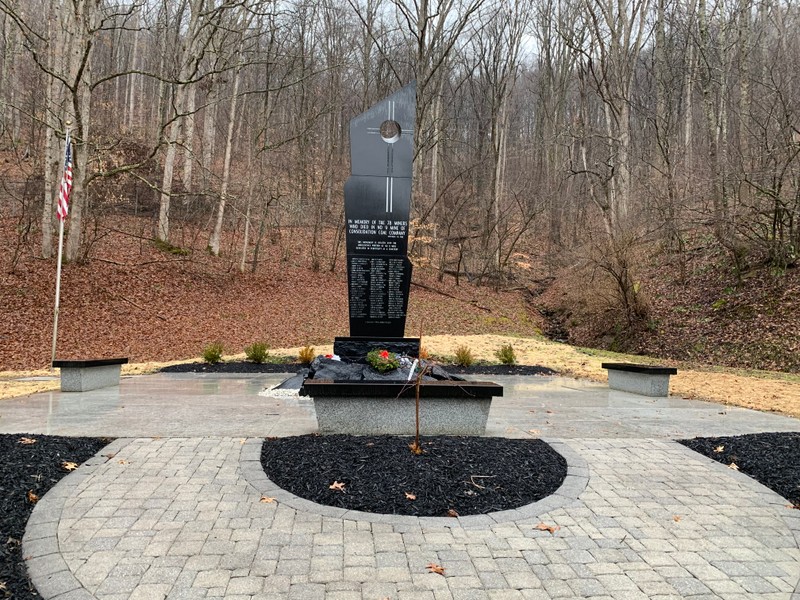
Fire from within the mine.
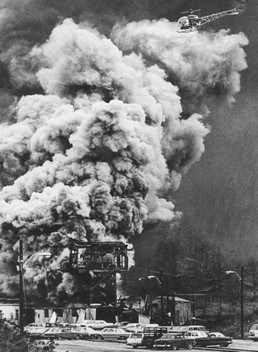
Recovery and investigation efforts after the explosion.
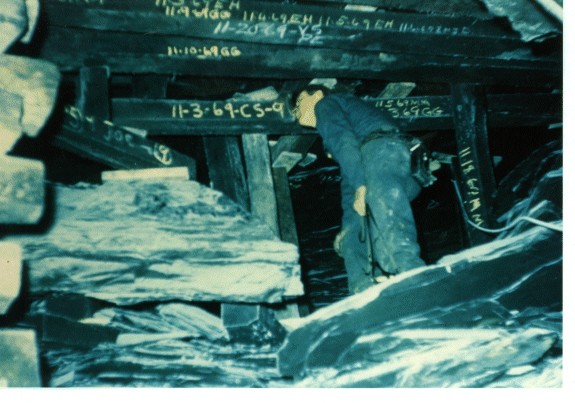
Smoke seen from the mine offices nearby.
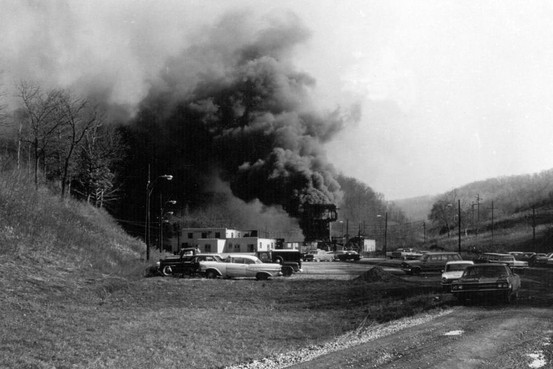
Farmington No. 9 Mine Disaster Memorial.
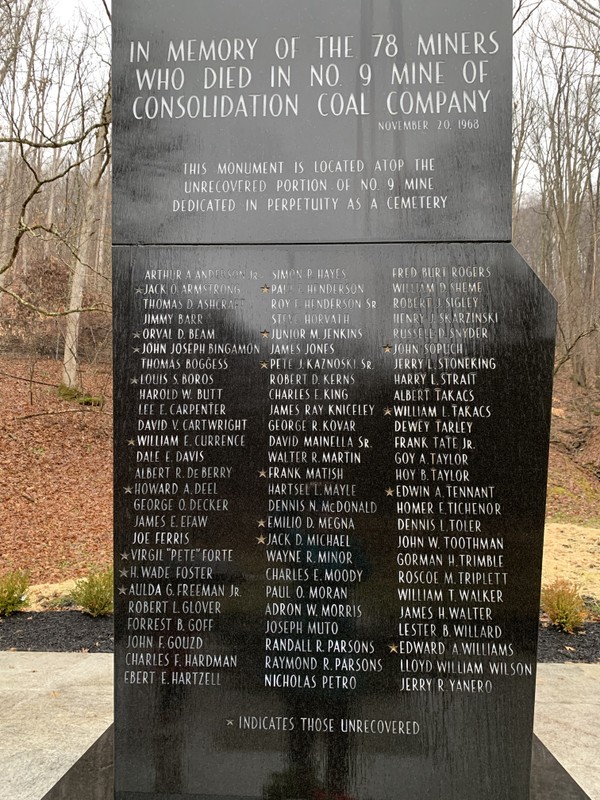
Farmington No. 9 Mine Disaster Memorial.
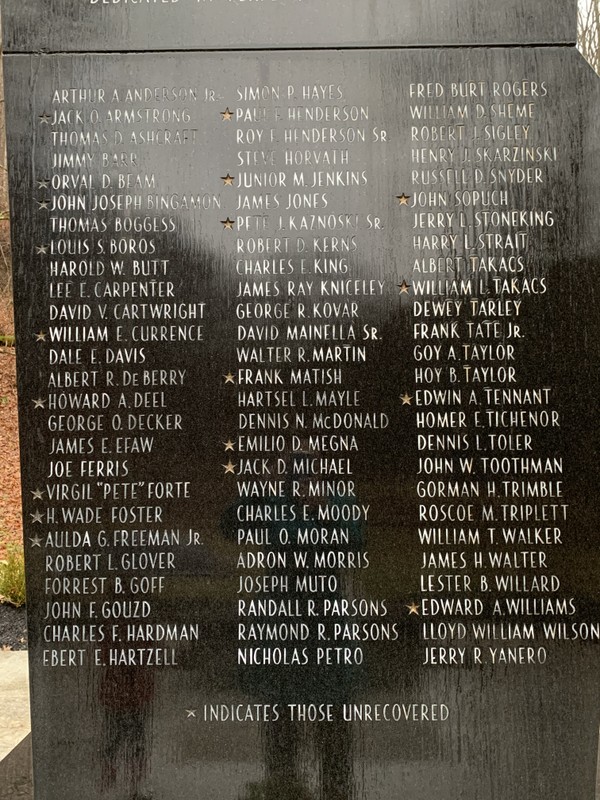
Farmington No. 9 Mine Disaster Memorial.
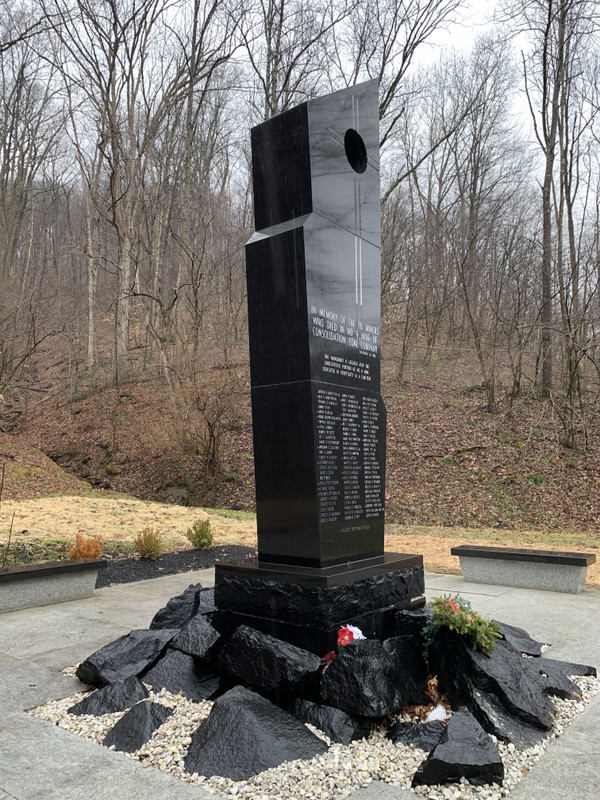
Farmington No. 9 Mine Disaster Memorial.
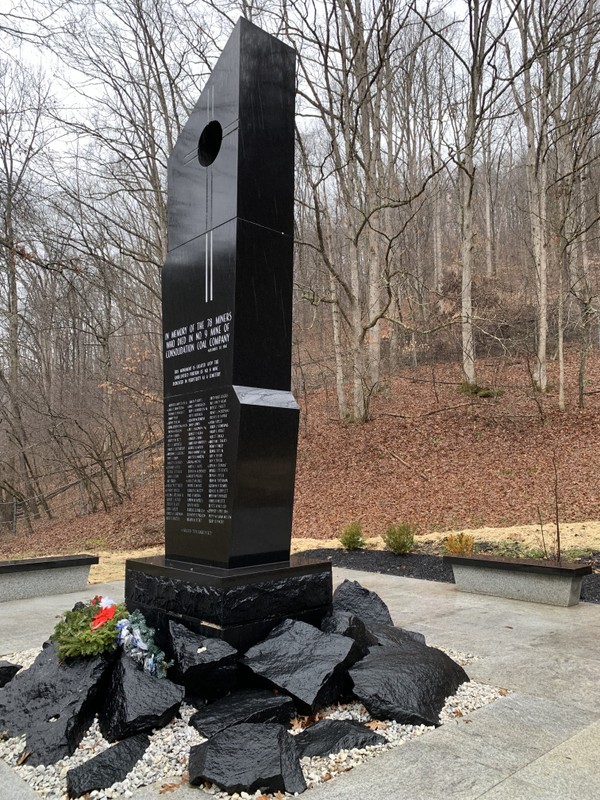
Farmington No. 9 Mine Disaster Memorial.
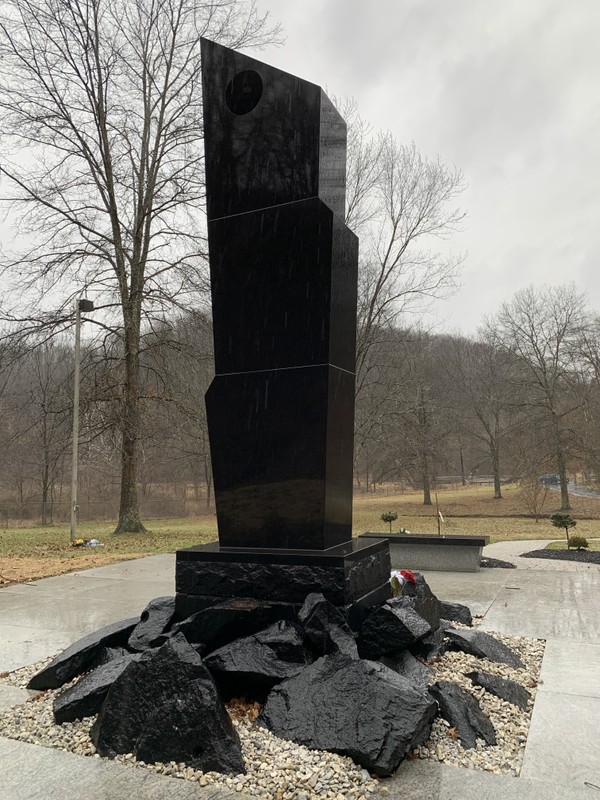
Farmington No. 9 Mine Disaster Memorial.
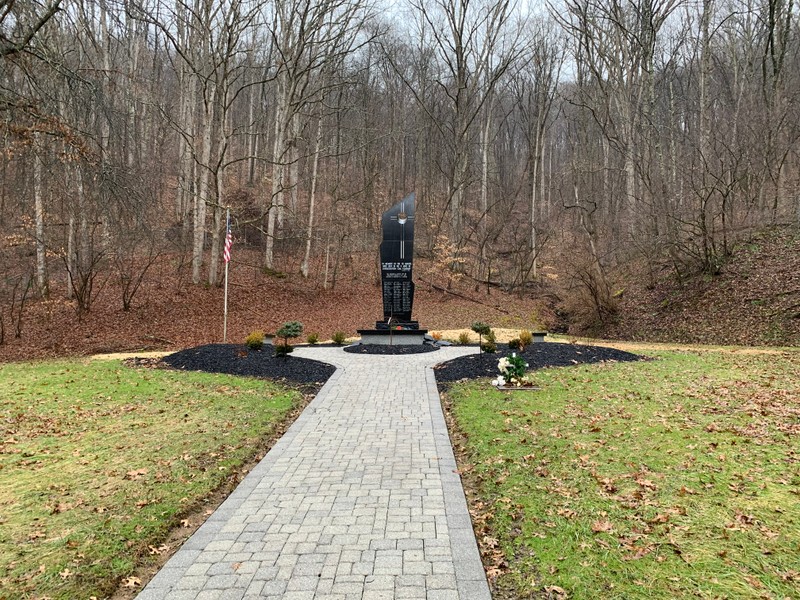
Farmington No. 9 Mine Disaster Memorial.
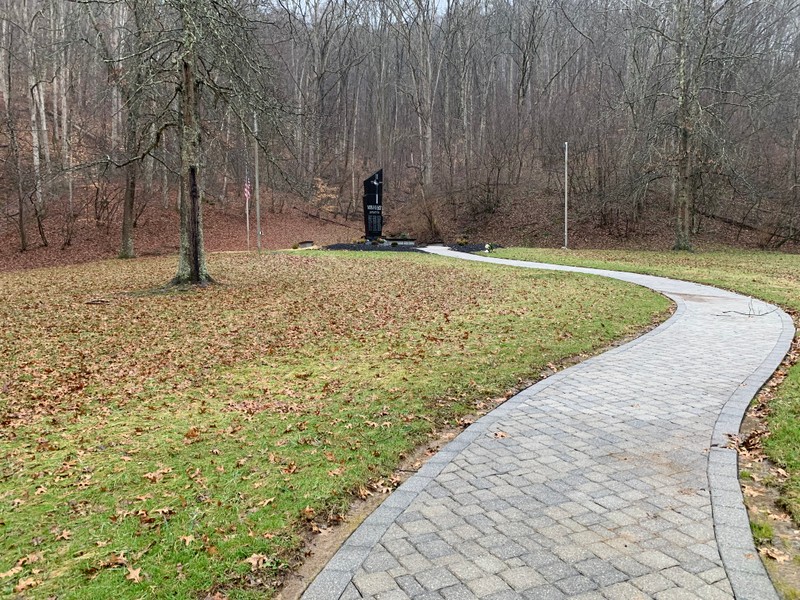
Farmington No. 9 Mine Disaster Memorial.
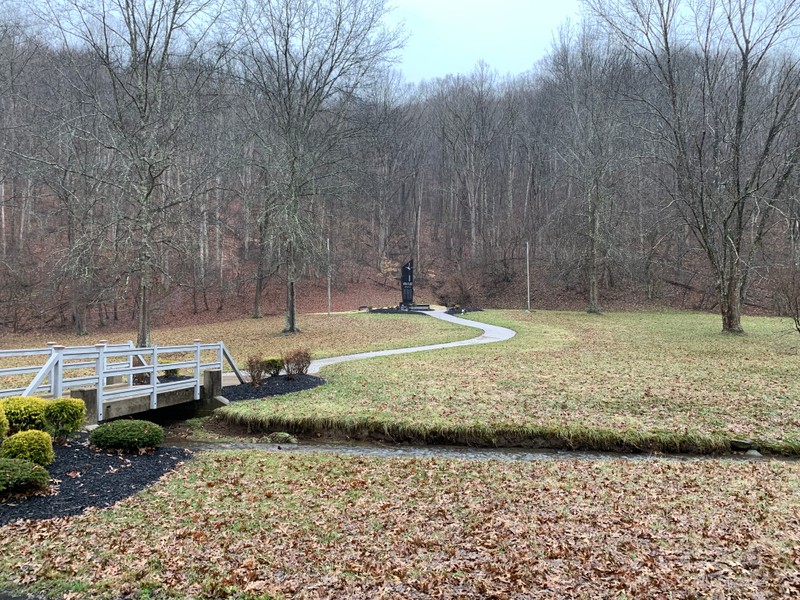
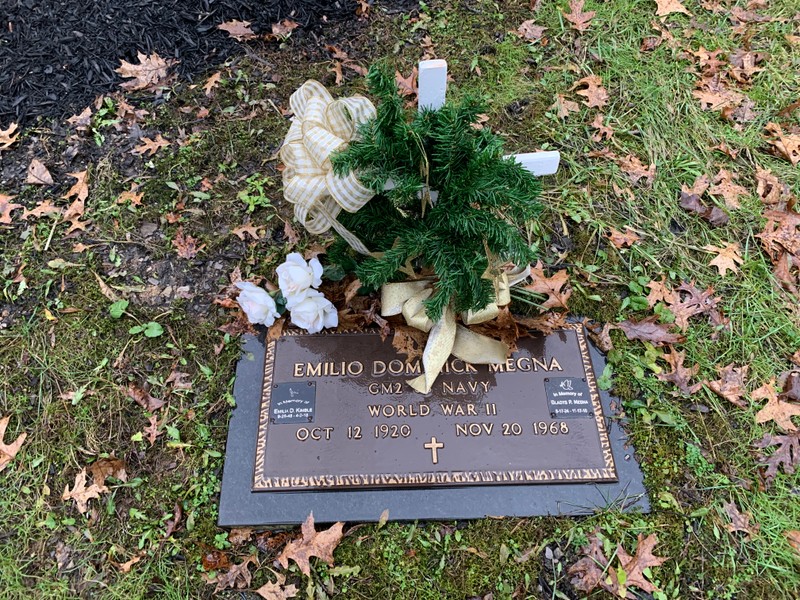
Backstory and Context
Text-to-speech Audio
Disaster
On November 20th, 1968 at 5:30 am an explosion shook the mine, producing shockwaves that were felt several miles away. Miners living in the immediate area flocked to the scene in hopes of attempting rescue, where they reported flames shooting several hundred feet into the sky. Within hours over 20 miners had escaped to the surface but 78 remained trapped within. The fires continued to rage underground until the mine was sealed with concrete. Efforts to recover the bodies resumed a year later but over 19 bodies were never recovered. (Stewart, 120-140)
Investigation
As early as 1909 officials expressed concern at the high amounts of flammable gasses released from within the mine. The mine had also been the site of several smaller incidents over the previous decade, including an explosion in 1954 which killed 15 miners. State and federal investigators at the time couldn’t determine any singular cause for the explosion. Instead investigators blamed a series of contributing factors such as: inadequate ventilation, poor testing procedures for methane gas, and a lack of control over both coal dust and the release of methane gas. (Stewart, 82-100)
Legal response
There was pronounced public and political outrage over the explosion in Farmington. Then Secretary of the Interior Stuart Udall decried the incident in a speech and promised substantial change, bemoaning the “disgraceful health and safety record that has characterized this major industry” (Lockard, 71). The deaths at Farmington helped spur the passage of the Federal Coal Mine Health and Safety Act of 1969, which mandated four mandatory inspections per year at all underground mines in the US, strict regulations on air quality within mines, and more supportive health policies for miners. While enforcement was lax at first due to understaffing, the necessary organizations were soon expanded.
Current Law Suit
New evidence discovered in regards to the accident in 2008 suggested that the chief electrician at the site knowingly disabled part of the ventilation system responsible for removing methane from the mine. This has caused new law suits to be drawn up by the families of the victims against the estate of deceased electrician Alex Kovarbasich and Murray Energy Group which now owns Consol. The law suit alleges that the mining company intentionally hid the role of Kovarbasich from investigators. The suit is ongoing. (http://blogs.wsj.com/law/2014/11/07/decades-after-deadly-w-va-mine-disaster-new-lawsuit-assigns-blam...)
The Memorial
The list of those who died are as follows (an asterisk ( * ) indicates the unrecovered):
Arthur A. Anderson Jr.
Jack O. Armstrong*
Thomas D. Ashcraft
Jimmy Barr
Orval D. Beam*
John Joseph Bingamon*
Thomas Boggess
Louis S. Boros*
Harold W. Butt
Lee E. Carpenter
David V. Cartwright
William E. Currence*
Dale E. Davis
Albert R. DeBerry
George O. Decker
Howard A. Deel*
James E. Efaw
Joe Ferris
Virgil "Pete" Forte*
H. Wade Foster*
Aulda G. Freeman Jr.*
Robert L. Glover
Forrest B. Goff
John F. Gouzd
Charles F. Hardman
Ebert E. Hartzell
Simon P. Hayes
Paul F. Henderson*
Roy F Henderson Sr.
Steve Horvath
Junior M. Jenkins*
James Jones
Pete J. Kaznoski Sr.*
Robert D. Kerns
Charles E. King
James Ray Kniceley
Charles Korsh Jr.
George R. Kovar
David Mainella Sr.
Walter R. Martin
Frank Matish*
Hartsel L. Mayle
Dennis N. McDonald
Emilio D. Megna*
Jack D. Michael*
Wayne R. Minor
Charles E. Moody
Paul O. Moran
Adron W. Morris
Joseph Muto
Randall R. Parsons
Raymond R. Parsons
Nicholas Petro
Fred Burt Rogers
William D. Sheme
Robert J. Sigley
Henry J. Skarzinski
Russell D. Snyder
John Sopuch*
Jerry L. Stoneking
Harry L. Strait
Albert Takacs
William L. Takacs*
Dewey Tarley
Frank Tate, Jr.
Goy A. Taylor
Hoy B. Taylor
Edwin A. Tennant*
Homer E. Tichenor
Dennis L. Toler
John W. Toothman
Gorman H. Trimble
Roscoe M. Triplett
William T. Walker
James H. Walter
Lester B. Willard
Edward A. Williams*
Lloyd William Wilson
Jerry R. Yanero
Pete Zogel, Jr.
Sources
Lockard, Duane. Coal: A Memoir and Critique. Charlottesville, University Press of Virginia, 1998. p. 71. Brief exploration of the responses to the Farmington Mine Disaster. Briefly mentions the impact that it had on regulation and the controversy surrounding it due to the inconclusive circumstances that caused the accident. Stewart, Bonnie E. No. 9: The Farmington Mine Disaster. Morgantown: West Virginia University Press, 2011. Recently published and examining the existing historiography on the subject as well as new evidence, this rich recounting of the Farmington Mine Disaster covers both the incident itself, the factors that contributed to it, and the impact it had on both regulation and the community. Stewart also examines the newest evidence at the time, drawing conclusions in regards to the failed procedures at the mine in ways older works could only infer. http://blogs.wsj.com/law/2014/11/07/decades-after-deadly-w-va-mine-disaster-new-lawsuit-assigns-blame/
https://www.msha.gov/mine-disaster-1968-farmington-explosion-anniversary
https://marioncvb.com/company/farmington-no-9-mine-disaster-memorial/
http://www.wvculture.org/history/disasters/farmington03.html
Photo by Kathleen Thompson, February 17, 2022.
Photo by Kathleen Thompson, February 17, 2022.
Photo by Kathleen Thompson, February 17, 2022.
Photo by Kathleen Thompson, February 17, 2022.
Photo by Kathleen Thompson, February 17, 2022.
Photo by Kathleen Thompson, February 17, 2022.
Photo by Kathleen Thompson, February 17, 2022.
Photo by Kathleen Thompson, February 17, 2022.
Photo by Kathleen Thompson, February 17, 2022.
Photo by Kathleen Thompson, February 17, 2022.
